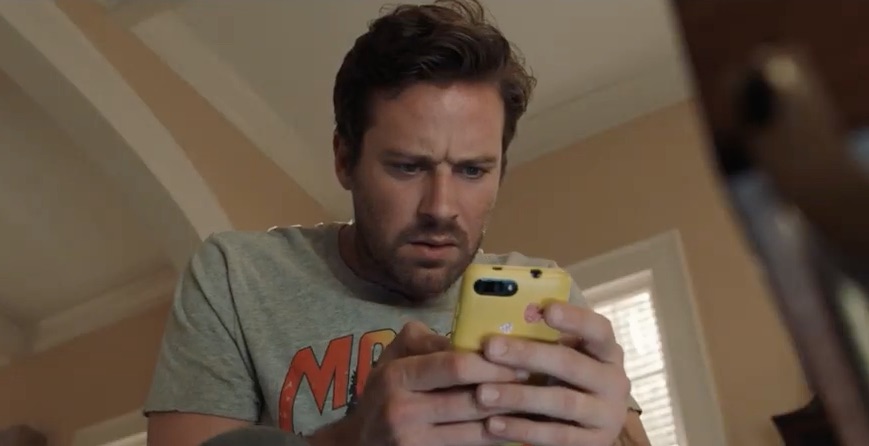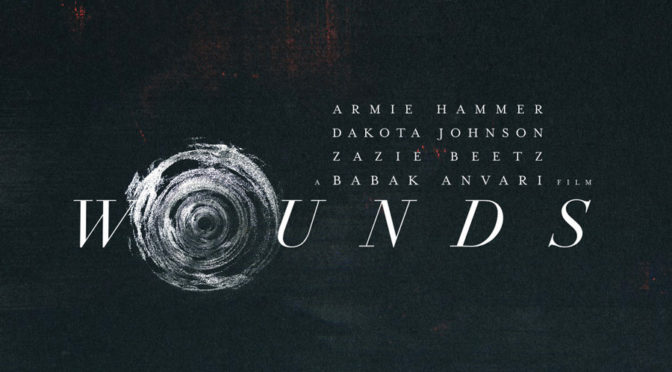After an incredible debut with Under the Shadow, writer-director Babak Anvari’s second feature can only be considered a disappointment. Based on the novella The Visible Filth by Nathan Ballingrud, the story follows Will (Armie Hammer; The Lone Ranger), a bartender in Louisiana, that leads a steady, but happily aimless life drinking heavily and enjoying himself. After breaking up a bar fight, he picks up a cell phone left by some college students and accidentally takes it home. He finds some alarming text messages asking for help and, believing it to be a prank, tells them to come back to the bar to pick up the phone. Soon the texts become dangerous and he discovers horrifying pictures and videos of body parts and what appears to be torture. He decides to give the phone to local police officers that frequent his bar, but the pull of the phone and its transgressive material begins to seep into his life.
Hammer continues to be an actor that looks the part of the leading man, almost to a ridiculous degree, but doesn’t have the acting talent to match. His deep voice lacks nuance in his delivery and his attempts at inflections during dramatic moments feel forced and stilted. He struggles to emote with his monotone diction and doesn’t have enough material to support him. Will, as a character, is mostly hollow. Some of this is in keeping with the themes of the story, but it doesn’t make him an engaging presence. He is never given enough background or motivation to add depth to his character and the supporting cast is similarly vacant.

While Anvari’s first film was a demonstration of complete directorial control, Wounds is lackluster. The film never maintains any level of sustained tension and struggles to even produce fleeting moments of suspense. Under the Shadow featured many scenes of poised camerawork that was fraught with impending peril as well as creative compositions, but none of that skill is present here. The majority of the film is shot with fairly standard blocking, sorely missing any personal style. There are a few jump scares, but they appear randomly and too briefly to have any effect. Worst of all, they have no relation to the story. For example, a close-up of a loud, dusty air conditioning unit is spliced in between two random scenes as a jump scare, but it only produces confusion. Decisions like this raise questions about the director’s judgement and vision in creating the film.
Some of the poor results can be blamed on the source material. The Visible Filth is an intriguing story, but one that may not have been a good fit for the big screen. Moments of tension created by unknown, potentially sinister text messages and voicemails work well on the page, but in cinematic form this becomes images of adults looking at their phones which doesn’t carry the same level of dread. This failed translation is especially harmful in the film’s conclusion. It resolves little for those who held on hoping for a worthwhile reveal for the story’s struggling mystery. The ending, while true to the source material, is so bland visually that Anvari resorts to mediocre computer generated effects to obscure the screen and hide its banality. Wounds isn’t an offensively bad film, but it is a bland and forgettable one which, given its pedigree, makes it profoundly disappointing.

2/5 stars.
